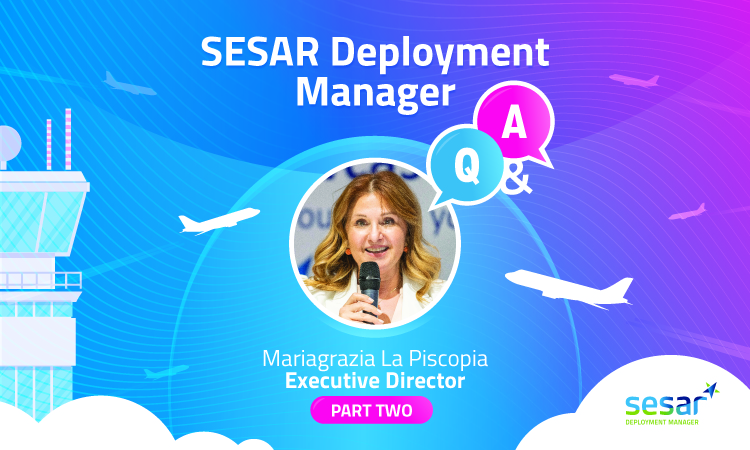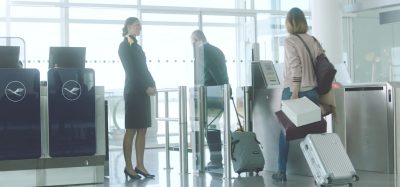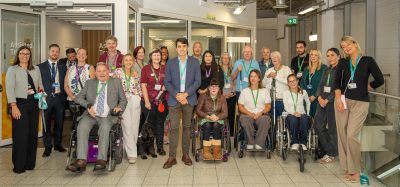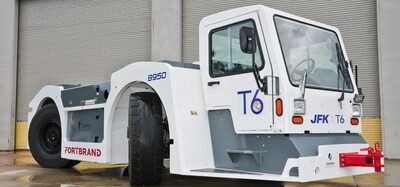The highway to the digital sky: A deep-dive into the SESAR project part 2
Posted: 17 May 2023 | Mariagrazia La Piscopia | No comments yet
In part 2 of this exclusive mini-series, Executive Director of SESAR Deployment Manager (SESAR DM), Mariagrazia La Piscopia, talks about the SESAR project.


Mariagrazia La Piscopia, talks exclusively about the SESAR project
In part 2 of this exclusive mini-series, Executive Director of SESAR Deployment Manager (SESAR DM), , talks exclusively to International Airport Review about the SESAR project and how we can reduce flight emissions right now rather than wait for next generation aircraft and SAF.
Read part 1 here! (click here)
What would you say about the evolution of the European Communication?
As SDM we have been entrusted with the set-up and coordination of the Data Link Services (DLS) Recovery Plan and implementation strategy a few years ago. In co-operation with the Network Manager, we worked on transitional solutions and helped air navigation service providers and airlines to get DLS implemented as fast as possible and make sure they could start using it in their daily operations.
On the occasion of the Airspace World 2023 event in March we marked a critical milestone of this strategy in this direction, as the ATS Common Datalink Services procurement process was launched by EUROCONTROL. With the establishment of the ATS Common Data Link Services (ACDLS, currently composed of EUROCONTROL and 20 Air Navigation Service Providers with more in the pipeline) governance, we will have a single Datalink Service Provider for the whole of Europe. We believe that this will make service provision more efficient and reduce the overall costs.
This is a solution that would not only benefit ground stakeholders and the ANSPs, but also the airlines flying in our skies, as it would contribute to the overall efficiency of the network.
In parallel, we are also focused on defining a strategy for the medium and longer term, and today marks an essential step in the roll out of this strategy.
We are approaching a moment where the current technology will not be able to sustain operations as we know them. It is expected that by around 2027 a capacity crunch in core EU could be expected if no mitigation actions are taken (i.e. Airline Operations Centre offload on other media (e.g. 4G), implementation of new frequencies and/or introduction of new technologies).
We are going to need additional technologies to manage air/ground communications, therefore and as SDM we are leading the elaboration of a multi-link implementation roadmap together with S3JU and the Network Manager. This multi-link concept aims at implementing gateways on the ground in order to accommodate different types of possible technologies on the airborne side. This will enable future technologies like SATCOM or LDACS to co-exist with VDL M2, thus complementing each other and alleviating VDL M2 saturation.
A/G communication are the foundation of any future evolution of air traffic management in Europe: without those, there is no initial trajectory information-sharing and it will be impossible to move towards trajectory-based operations (TBO), the highway towards digital sky!
What new technology are you introducing to manage aircraft, drones, air taxis etc?
This is a not directly managed by the SDM, however we believe that:
- We need to adapt the underpinning infrastructure
- We must ensure that the overall regulatory framework is there to support the operations of the new entrants, without interfering with the safe operations of conventional aircrafts
- We need to follow an iterative approach to progressively integrate drones and other new entrants into the airspace, up to a point where the full integration is granted.
How close are we to realising the Digital European Sky and what is next for the project?
It is clear that if we want to make ATM more modern and fit for future challenges, we need to make it more digital, as fast as we can. There is an agreed vision in the industry, which is to go towards the Digital European Sky. But this does not mean that we can have more digital operations only in the future decades, we need to accelerate and make it happen as fast as we can.
We have achieved a lot of progress in the last decade. Digital systems or automated tools are now available across Europe, in practically every tower or air command and control system (Area Control Centres). We have moved from paper strips and controller notes to digital information exchanges throughout the systems and through all phases of a controlled flight. If you entered a control tower in 2008, and went back to the same one in 2023, you would not recognise most of what you would see. You would see a range of digitalised tools and systems that have changed the way ATM is managed, via airport collaborative decision making (A-CDM), ground monitoring systems, electronic flight strips, etc.
The same goes for an Area Control Centre, where most of the ATM systems have gone through major re-hauls in the last decade.
One of the major tasks that we have undertaken as an industry is to change the way information is exchanged throughout the ATM environment via SWIM (System Wide Information Management): we are not yet there unfortunately but when fully implemented, this would make sure that Aeronautical, Weather, Network and Flight all information is available for everyone, in a timely, digital and sometimes automated manner.
As SDM, we have already helped several stakeholders in their journey towards digitalisation. Since 2014, we have closed almost 70 projects, and we are continuing to make progress on a monthly basis; meteorological data is now shared more efficiently than ever and new digital infrastructure is deployed (the latest by the French military or by Austrocontrol, or in Italy).
One of our next targets is to ensure aeronautical information exchanges move to a fully digital and inter-operable set-up across Europe. Together with more than 20 organisations and network managers, we have established some ambitious initiatives to make sure that aeronautical and aerodrome information, airspace structure, availability, and reservation for military services are available for every interested stakeholder in a digital manner. This will be a reality in less than two years. Another is the shift to a fully digital management of flight planning information, which has potential for great benefits for airlines and ANSPs.
The other major target we have in front of us is to get closer to trajectory-based operations, and this would happen through the last puzzle in the CP1 mosaic, the initial trajectory information sharing. Shifting to TBO will digitalise and automate how ATM is run. It opens the door to a much more efficient management of operations from controllers, as they will be able to make better decisions based on a precise calculation of the planned trajectory. At the same time, this technology has direct benefits already today; what our colleagues in MUAC have measured is that airlines can fly better routes, they can have better climb performances, they can start their descents later in time, etc., this alone allows them to save tonnes of unnecessary emissions today. At the same time, this technology has direct benefits already today: what our colleagues in MUAC have measured is that airlines can fly better routes, have better climb performances, start their descents later in time, etc.: this alone allows to save tons of unnecessary emissions, already today.
What are the challenges that you face this year?
2023 is part of a critical window for ATM modernisation and for the SESAR programme. Stakeholders will continue to deal with the outcomes and effects of the pandemic, as well as with the new crises such as the war in the heart of Europe and the energy and inflation crisis. At the same time, 2023 will set the scene for the future evolution of air traffic management in Europe, with critical milestones occurring throughout the year.
I believe there are many key initiatives to be taken care of:
- Focus on making sure that the implementation of Common Project 1 continues according to plans and at the same pace we have seen in the last months. We see the commitment of stakeholders to work together, and we want to build on that and on the momentum that was generated this year
- Building consensus within the industry upon the roadmap to implement the multi-link concept, as a way to ensure air/ground communications could continue to support ATM operations in the future, avoiding capacity crunch and disruptions
- Meeting the industrialisation target date of initial trajectory information-sharing by December 2023.
All these challenges can be solved only if European SES bodies and operational stakeholders work together towards our common goal, there is not much that we can’t achieve if we don’t join our forces.


Mariagrazia is the Executive Director of the SESAR Deployment Manager (SDM). The Single European Sky’s ATM Research project (SESAR) is one of the most ambitious modernisation projects launched by the European Union in the transport domain, contributing to the implementation of the Single European Sky. The SDM is in charge of coordinating and synchronising the innovation of Europe’s Air Traffic Management infrastructure ensuring, the full involvement and responsibility of the ATM industry in the delivery of SESAR. The SDM function is operated by the SESAR Deployment and Infrastructure Partnership (SDIP), a consortium composed by Airlines, Air Navigation Service Providers, Airports and EUROCONTROL.
Join our free webinar: Beyond silos: How ecosystem thinking elevates the airport experience
In today’s complex aviation landscape, airports are moving beyond siloed operations to embrace a new era of collaboration. This webinar focuses on how leading airports are using ecosystem thinking to adapt, personalize, and continuously improve every touchpoint, boosting both passenger satisfaction and non-aeronautical revenue.
Date: 13 Nov | Time: 10:00 GMT
REGISTER NOW TO SECURE YOUR SPOT
Can’t attend live? No worries – register to receive the recording post-event.
Related topics
Airport Collaborative Decision Making (A-CDM), Digital transformation, Emissions, Operational efficiency, Sustainable development


















